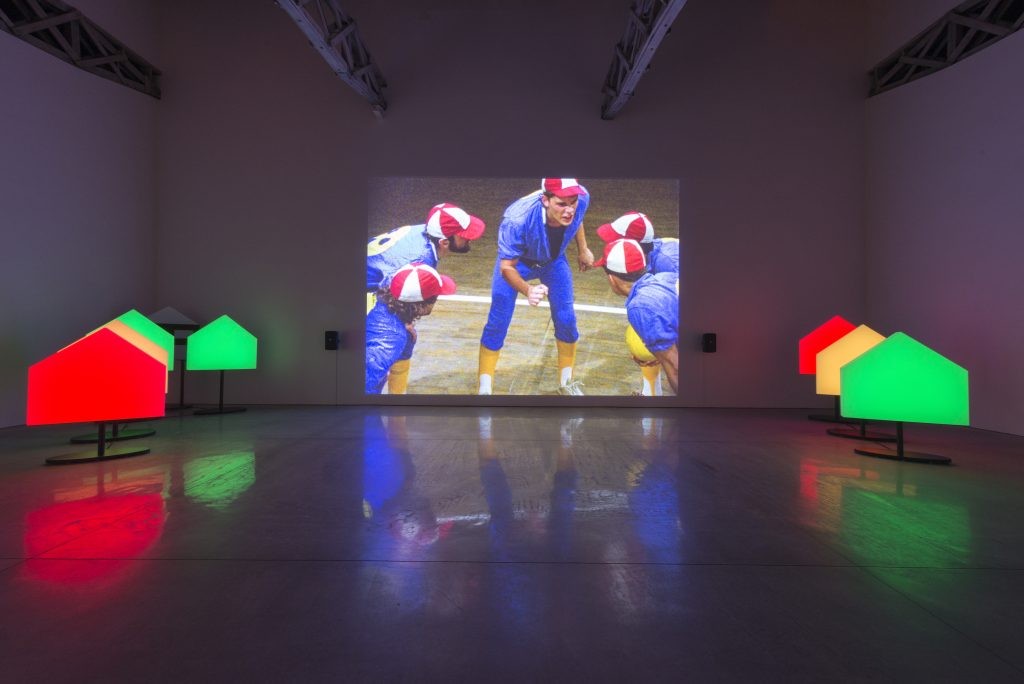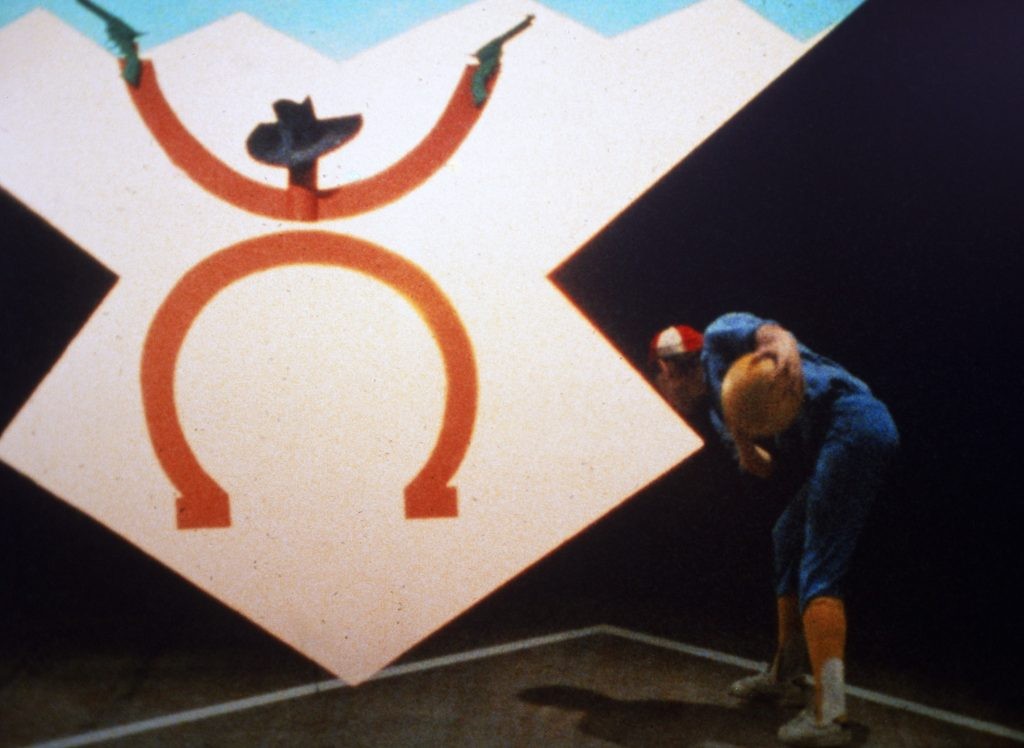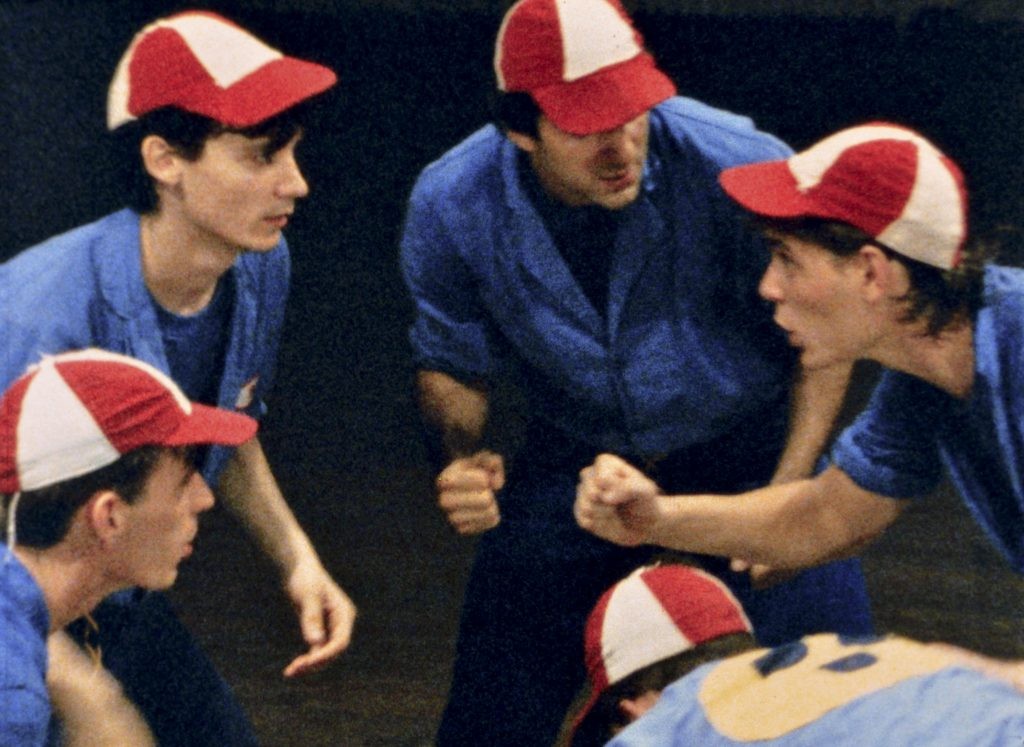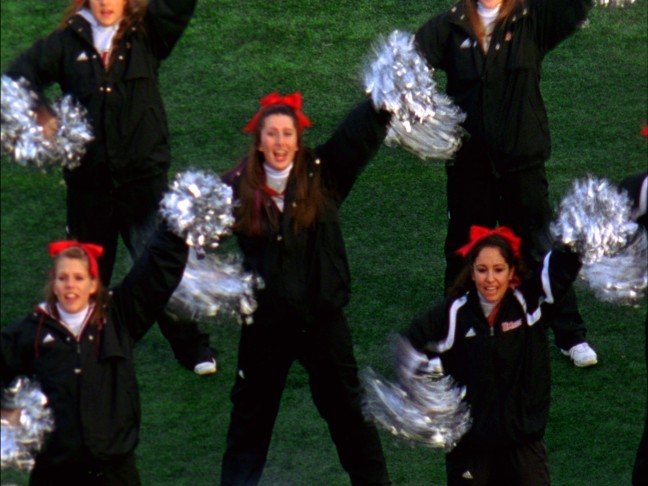Ericka Beckman
Game Mechanics
06 Jul - 03 Sep 2017

Ericka Beckman
You The Better (1983/2015)
installation view Less Than One at Walker Art Center, Minneapolis. Photo: Gene Pittman
You The Better (1983/2015)
installation view Less Than One at Walker Art Center, Minneapolis. Photo: Gene Pittman

Ericka Beckman
You The Better (1983/2015), installation view Less Than One at Walker Art Center, Minneapolis. Photo: Gene Pittman
You The Better (1983/2015), installation view Less Than One at Walker Art Center, Minneapolis. Photo: Gene Pittman
ERICKA BECKMAN
Game Mechanics
6 July – 3 September 2017
The film and video works of US American artist Ericka Beckman focuses on games and sport competitions and their rules as well as featuring the playing field as an allegory for the development and maintenance of socio-cultural norms.
Beckman, who is recognised today as an important representative of the so-called picture generation, studied in the 1970s at the famous Californian Institute of the Arts (Cal Arts) in John Baldessari’s Post Studio class. The New York No Wave scene with their cross-over mediums was a further important influence on her as was the work of Jean Piaget, the cognitive development psychologist. She has frequently cooperated with artists of her own generation such as Mike Kelley, Matt Mullican, Tony Oursler or James Welling.
Beckman’s films are generally structured like games. The narrative develops out of the subject matter: accumulation, competition and the organisation of thoughts and memories by means of rules, symbols and symbolic thought. The protagonists are not actors but act as players. In the process the artist reflects on new and emerging technical advancements such as virtual reality, artificial intelligence and computer games, something she has done from very early on in their development.
The 16mm film, Cinderella (1986) is a good example here. Frequently interpreted as a feminist film, Beckman staged it as a seemingly surrealist fairy story. The heroine appears to be trapped between her work at an industrial kiln and dancing with the prince in the ballroom and is only able to liberate herself from the rules of the game when she realises that she does not have to return home at midnight, but can do so whenever she wishes.
A pulsating beat, stop-motion animation and superimposed forms and gestures are characteristic for Beckman’s film works which she creates using multiple exposures of the analogue film material. Since 2000 camera choreography, which Beckman mainly uses for the deconstruction of architecture, has been gaining in significance. In her most recent film, Tension Building (2014), the artist superimposes animated shots of an architectural model of a US football stadium with time lapse material of an Italian stadium during the fascist era. The film is dedicated to college football, the linkage between sport and the armed forces and the basic structure of experiences. At the same time it confronts fundamental filmic issues such as the melding of the realms of the imaginary and the real, the regulation of time and space, and movement and the interruption of movement.
Game Mechanics
6 July – 3 September 2017
The film and video works of US American artist Ericka Beckman focuses on games and sport competitions and their rules as well as featuring the playing field as an allegory for the development and maintenance of socio-cultural norms.
Beckman, who is recognised today as an important representative of the so-called picture generation, studied in the 1970s at the famous Californian Institute of the Arts (Cal Arts) in John Baldessari’s Post Studio class. The New York No Wave scene with their cross-over mediums was a further important influence on her as was the work of Jean Piaget, the cognitive development psychologist. She has frequently cooperated with artists of her own generation such as Mike Kelley, Matt Mullican, Tony Oursler or James Welling.
Beckman’s films are generally structured like games. The narrative develops out of the subject matter: accumulation, competition and the organisation of thoughts and memories by means of rules, symbols and symbolic thought. The protagonists are not actors but act as players. In the process the artist reflects on new and emerging technical advancements such as virtual reality, artificial intelligence and computer games, something she has done from very early on in their development.
The 16mm film, Cinderella (1986) is a good example here. Frequently interpreted as a feminist film, Beckman staged it as a seemingly surrealist fairy story. The heroine appears to be trapped between her work at an industrial kiln and dancing with the prince in the ballroom and is only able to liberate herself from the rules of the game when she realises that she does not have to return home at midnight, but can do so whenever she wishes.
A pulsating beat, stop-motion animation and superimposed forms and gestures are characteristic for Beckman’s film works which she creates using multiple exposures of the analogue film material. Since 2000 camera choreography, which Beckman mainly uses for the deconstruction of architecture, has been gaining in significance. In her most recent film, Tension Building (2014), the artist superimposes animated shots of an architectural model of a US football stadium with time lapse material of an Italian stadium during the fascist era. The film is dedicated to college football, the linkage between sport and the armed forces and the basic structure of experiences. At the same time it confronts fundamental filmic issues such as the melding of the realms of the imaginary and the real, the regulation of time and space, and movement and the interruption of movement.




